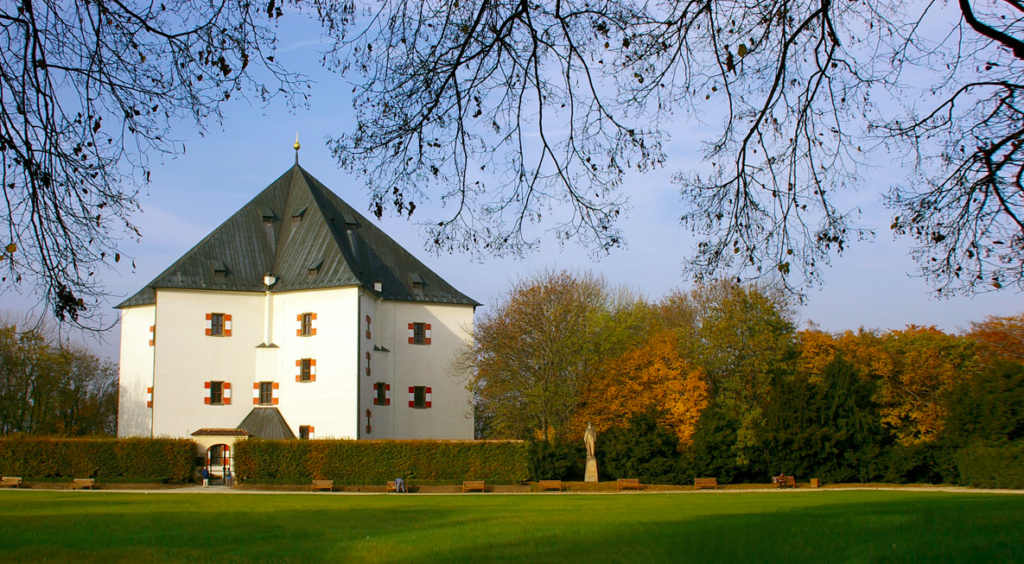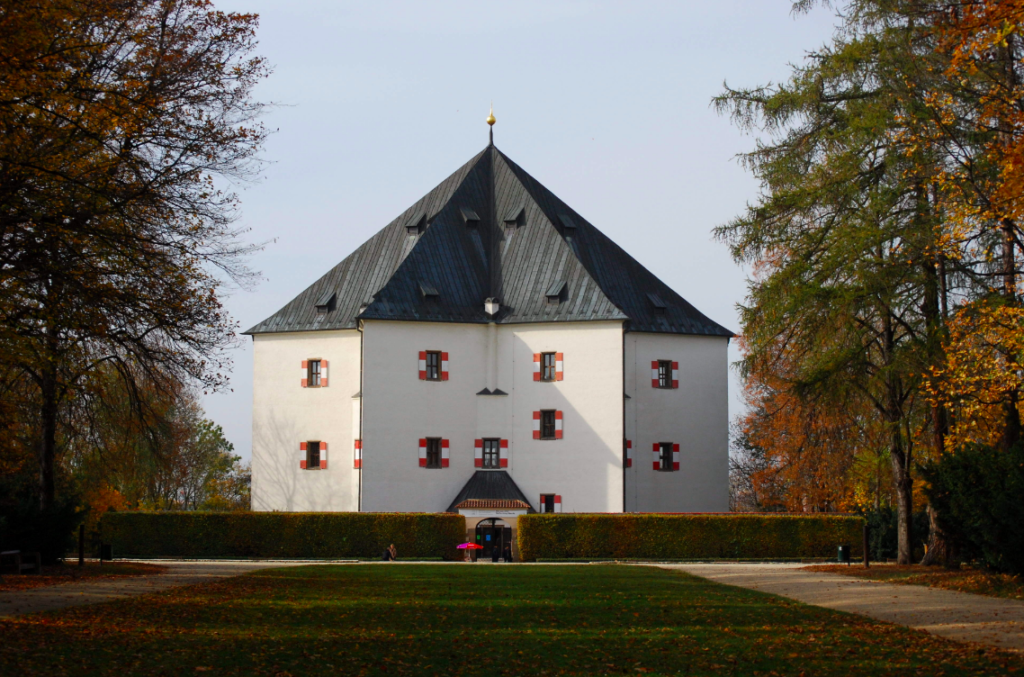An excellent trip for a pleasant walk in Prague is to go to Obora Hvězda (Hvězda Game Reserve) and Letohrádek Hvězda (The Hvězda Summer Palace,) in Prague 6.
The area has maintained its atmosphere, mainly because of the summer palace with its atypical six-pointed star (hvězda) shape – from which both the park and the palace get their names.
Even though it is located in the city of Prague, it guarantees a quiet and peaceful atmosphere surrounded by nature. The Hvězda Game Preserve is an ideal place for a stroll and a visit to the Hvězda Summer Palace, that holds exhibitions, concerts, and other cultural and social events throughout the year. An exhibition regarding the Battle of White Mountain, which took place nearby in 1620, is on permanent display inside the publicly accessible villa.
It was built according to the plans of Archduke Ferdinand II of Austria, in the shape of a six-pointed star, symbolizing the principles of harmony, proportions, symmetry and numeric. Both, the summer house and the Hvězda game preserve were registered in the list of National Cultural Monuments in 1962.
You can get there by bus, tram or car. We would recommend taking the tram to stop “Sidliste Petriny” or “Vypich”.
The park, enclosed by a huge wall, has three main gates (Libocká, Pražská and Bělohorská,) plus several smaller ones.
With three majestic tree-lined avenues that served as entertainment and hunting for Renaissance aristocracy, now is a place where you can go for a walk, a run or a bicycle ride. The main road crosses the whole park and leads us to the summer house. From the main road, we can also take other variant routes.
The game preserve is accessible for the public throughout the year, and the palace is opened from April to October, every day except Monday, between 10:00 a.m. and 6:00 p.m.



Authorities in the northwestern Bubeneč district announced that they can no longer keep cleaning the monument to Marshal Ivan Konev after continuous acts of vandalism against it, so they decided to cover it with a tarpaulin.
The move, announced by the mayor of Prague 6, Ondrej Kolar, caused an immediate backlash. Several dozen people protested against the decision on Monday at the statue’s location, including the Czech president’s spokesman Jiri Ovčaček.
“We have different opinions and we choose different political parties, but one thing connects us, we reject the rewriting of history and we reject people who trample on the values of democracy,” Ovčaček said in a speech.
He was one of the multiple Czechs protesting the covering-up as it happened. He posted a photo of him bowing his head before Konev’s statue on his Twitter account, calling him “liberator of the Czech Republic and of the Auschwitz death camp.”
The Russian Embassy condemned the timing of Kolar’s decision, made “in the run-up to the 80th anniversary of the most horrific military conflict in human history.” The embassy claimed it has received numerous letters from Czech citizens denouncing this move, with some “wondering which side would the incumbent municipal government of Prague 6 district support during World War Two.”
While the embassy did not provide specific examples of the letters, denunciation of the act from the Czech general public was evident. A man named Jiri Cernohorsky, described as “anti-immigration activist and supporter of the Russian Federation” removed the cover in protest on Friday and again during the Monday protest, and was reportedly apprehended by police for that.
In response to criticism, district boss Ondrej Kolar said the Konev statue is targeted for vandalism at least twice a year. He believes this illustrates the district population’s negative attitude towards Konev and called those gathered for Monday’s protest “extremists united by… a blind love for Russia.”
The monument to Konev was unveiled on May 9, 1980, the 35th anniversary of the liberation of Prague by the troops of the 1st Ukranian Front, commanded by Konev. While hailed as a WWII liberator, Konev’s post-war actions still spark controversy because of his role in the suppression of the Hungarian uprising in 1956 and the so-called Prague Spring of 1968.

